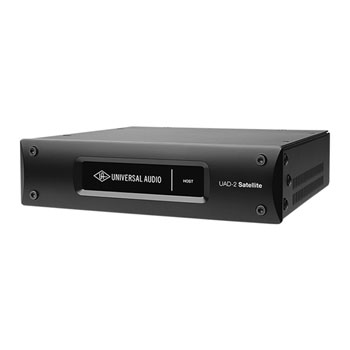

EMT 140Įlektro-Mess-Technik, better known as EMT, introduced the very first plate reverb in 1957: the EMT 140 Reverberation Unit. Just like analog EQs and compressors, some engineers still swear by what these hardware units provide, which is why all the following reverb and delay units have plugin emulations. Many of these effects units produced have been used on countless hit records over the years.
#Universal audio plugins vs analog hardware install
Putnam went on to install reverb chambers in studios all across the country - until outboard reverb and delay units became increasingly available in the late 50s. was the first engineer to use “artificial reverb” on a track (“ Peg o’ My Heart” by The Harmonicats, which was a huge hit). In 1947 Universal Audio’s Bill Putnam, Sr. But up until around the 40s, the only way to apply reverb to a recording was to move the mic further away from the sound source - and the only way to apply delay was by daisy-chaining two tape machines together. The range of analogue colours it paints is vast, and its sonic clarity and depth are fabulous.Reverb and delay plugins are common tools for every modern mixing engineer - most DAWs even include their own effects plugins for free. This new 1073 is a huge step up from the original UAD model, and not just because it simply sounds better, but also for the inclusion of the Apollo input preamp stage, which really is a potential game-changer.

But if you intend to mix with the plugin in your DAW, when using, say, a UAD-2 Duo unit, you'll only be able to run 4 mono or 2 stereo instances (though the EQ section can be disabled to reduce DSP usage). If you're recording through it as a Unison input stage, it's not so bad, as you only need to record through it once. One caveat is the enormous DSP demands of the new 1073, consuming 40% of a single UAD DSP chip per mono instance, and 67.6% for a stereo one. The long-throw output fader adds colour- useful for a bit of overdrive. The low shelving band is a coarse control that works to add or subtract weight at 35, 60, 110 or 220Hz, while the passive high-pass filter shaves off bottom-end at 18dB/octave from a 50, 80, 160 or 300Hz rolloff point. The air of the 12kHz shelving band is there, as is the extreme but smooth nature of the mid-range bell band, with its distinct colouration. The new EQ algorithms better portray the tasty non-linearities of the real thing. And all of this is before you've touched the drive levels and the high/low impedance switch. "Audio recorded through it comes at you with a definition and solidity that you can almost reach out and feel"Īudio recorded through it comes at you with a definition and solidity that you can almost reach out and feel - if you're not already a believer in the theory that the quality of the preamp is as important as that of the mic it's connected to, this will leave you in no doubt.

The Apollo's own preamps sound good as they are, but insert the 1073 and the difference is night and day. UA's new 1073 sounds absolutely stunning. The only 1073 input feature not present on the Unison version is the switchable 300/1200 Ohm mic impedance. It works beautifully, too, and with other Unison-enabled plugins (the API Vision Channel Strip and UA 610), the versatility of the system is beginning to be realised.


 0 kommentar(er)
0 kommentar(er)
